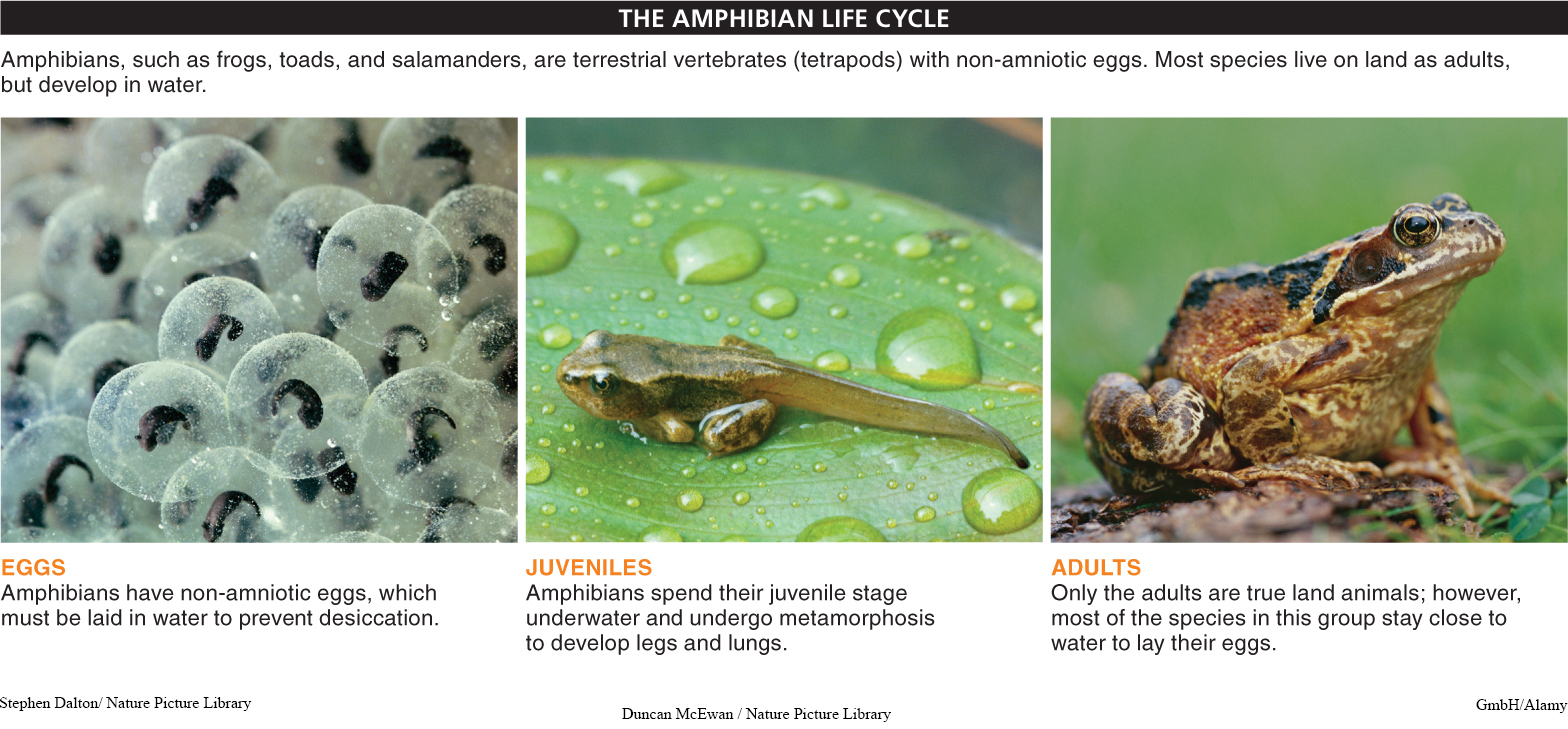11.16–11.20: All terrestrial vertebrates are tetrapods.

The ancestors of all vertebrates that live on land had lungs and four legs. Some modern vertebrates, such as whales and snakes, have evolved so that their limbs are reduced to a few shrunken and unused bones. Whales and some snakes have returned to living in water, and some salamanders have lost lungs and breathe through their skin, but these are recent changes, occurring in species whose ancestors had lungs and four legs. Taxonomically, all terrestrial vertebrates are tetrapods (tetra = four; poda = feet).
Terrestrial vertebrates are divided into two main groups: (1) animals (called non-
The first terrestrial vertebrates were amphibians, from the Greek word amphibios, meaning “living a double life.” There are two stages in the life of most amphibians: a water-

477
The juvenile stage of frogs, called a tadpole, lives in water, lacks legs, and eats algae. A few weeks (or up to many months in some species) after hatching, metamorphosis occurs, and the tadpole develops legs, lungs, and a digestive system fit for its adult life as a carnivore. Adult frogs have thin, moist skin through which gas (oxygen and carbon dioxide) exchange with the air can take place. When a frog is underwater, for example, oxygen diffuses directly from the water into the blood.
The past two decades have seen a stunning decline in amphibian populations throughout the world, and almost a third of all amphibian species are endangered or threatened. This situation is attributable to a combination of causes: climate change, habitat degradation, fungal diseases, and increased pollution.
TAKE-HOME MESSAGE 11.16
Amphibians are terrestrial vertebrates, but the adults of most species still lay eggs in water. The eggs hatch into aquatic juveniles.
The word “amphibian” comes from the Greek word amphibios, meaning “living a double life.” Why is this name so fitting?